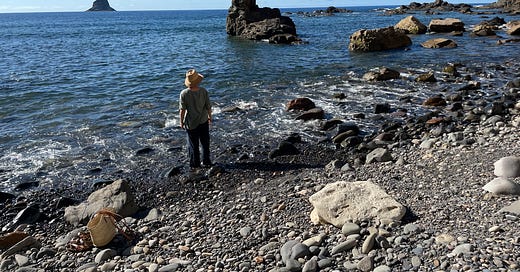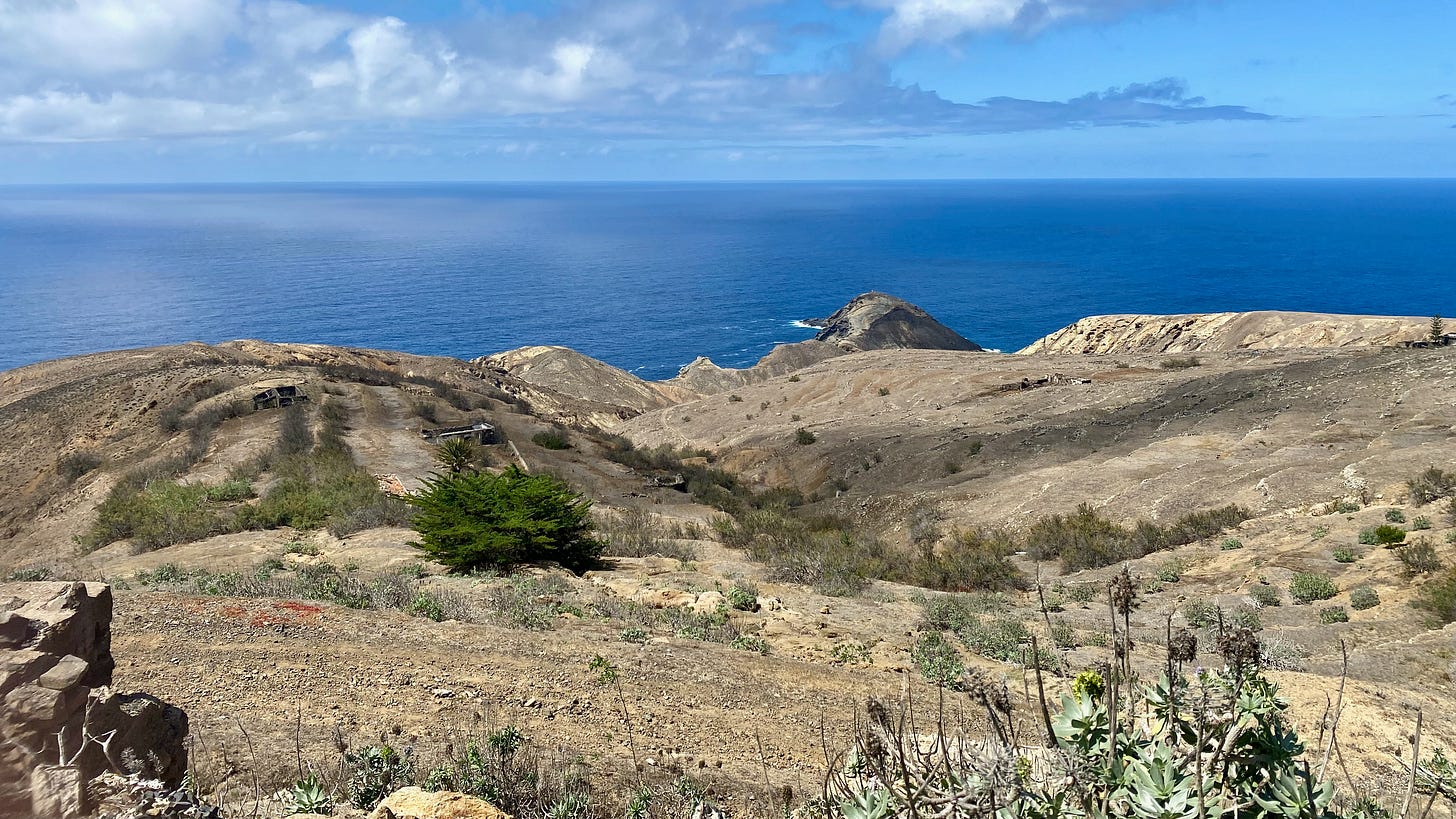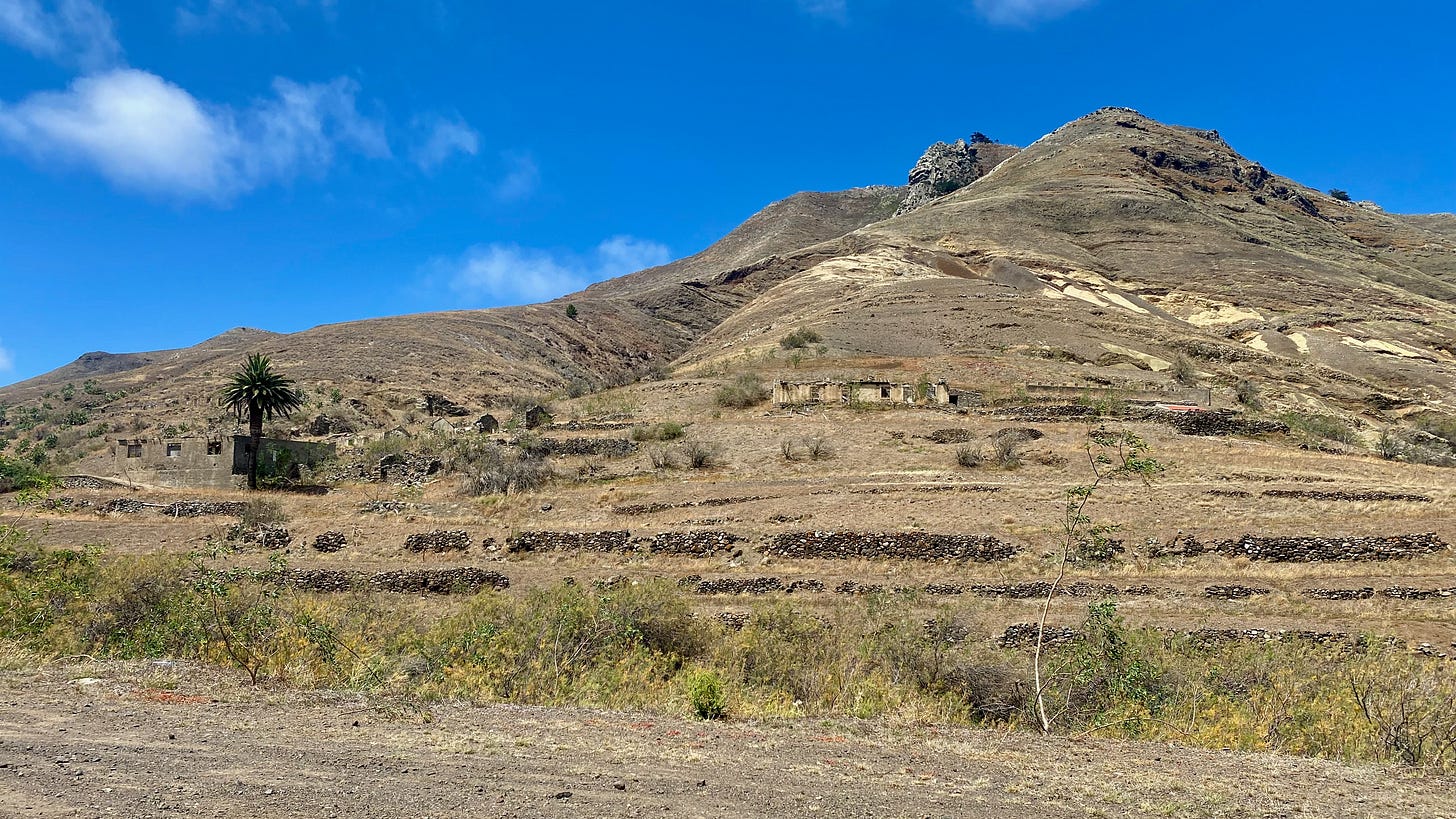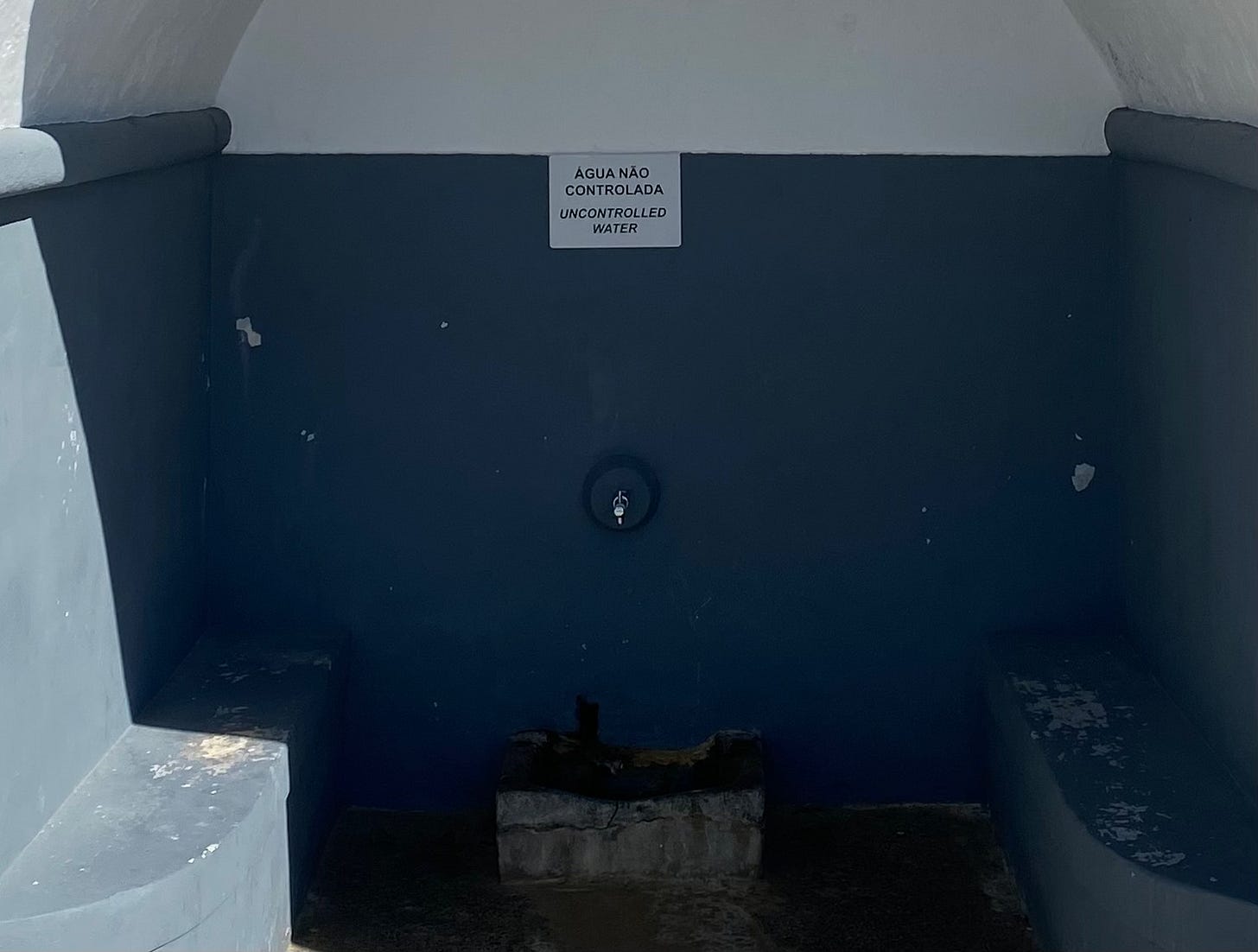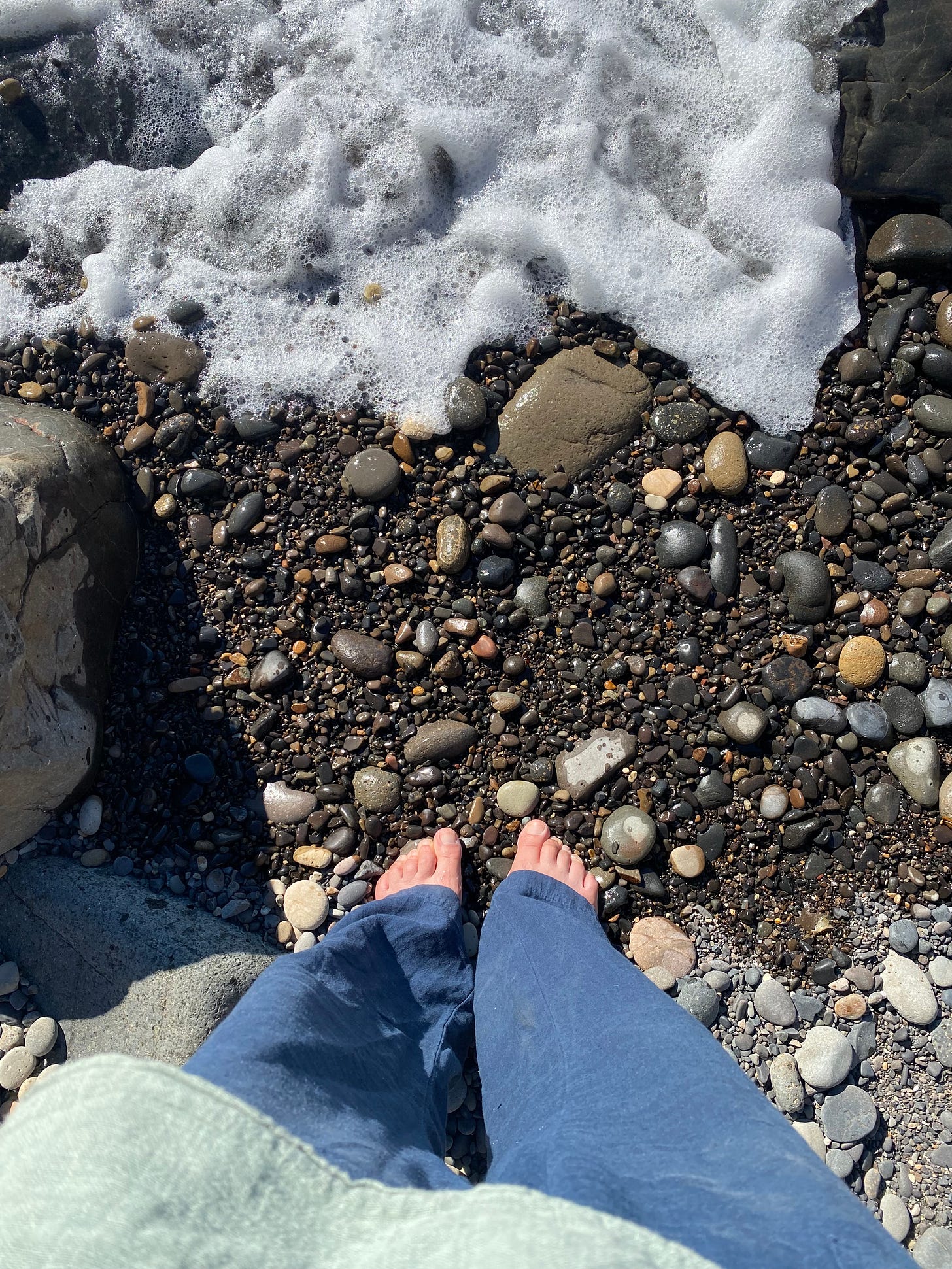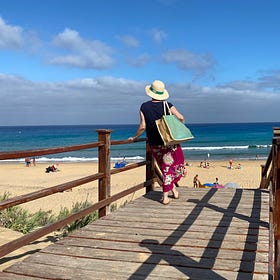Hello, welcome to this week’s newsletter — another postcard from Portugal, where I am on holidays and visiting my family (if the two can ever be combined…).
If you are new here, welcome! If you haven’t already, you may want to read a bit more about me and what to expect from Clay on my mind here and in the About tab. Studio updates (in more regularly posted newsletters) and more clay related topics will resume in August. Although… there is talk of clay in this letter — I can’t help it, the stuff is indeed always on my mind…
A short warning to those reading this in email: Substack tells me that this letter is too long for most email servers/providers and will likely appear truncated. My fault for including so many pictures. If you wish to read/see the full post, you’ll need to click "View entire message" and you'll be able to view the entire post in you email app. Or you can visit my Substack site or download the app and look for Clay on my mind there.
As you read this, I am no longer in Porto Santo. We are back in Lisbon where we will spend the next couple of days before heading north, to Tomar.
The last week on the island passed so quickly I am not sure where the time went. As usual, I left a bunch of stuff for the last day (including an amazing late afternoon swim) and ended up forgetting I had meant to collect a small jar of sand to use in my pottery…
Two weeks in Porto Santo is, at the same time, too long and not long enough. After the first days, going to the beach becomes less appealing (especially after the crowds arrive, which was earlier than I had expected), but then, suddenly it’s time to leave and you remember that this is your last chance to swim in the ocean without getting frostbite (seawater here sometimes reaches 24 ºC, compared to the much less balmy 17-18 ºC on most mainland costal beaches) plus all the things you meant to see, visit, do, taste, buy… Next time, you think with a resigned sigh.
Still, we did manage to get in the car and drive around a little. We ate a late lunch at the excellent restaurant Porto dos Frades, in Serra de Fora, and we visited the museum Casa da Serra, where I chatted with the owner — a very nice and knowledgeable local gentleman — about past local traditions and the dying artesanato, such as basketry from cane leaves and palm tree leaves, and, of course, pottery. He confirmed that there are no local potters anymore (the one person who makes traditional clay figurines, whom I also spoke to, works with clay he orders in), and we spoke about where natural clays can still be found (I told you there would be clay…).
Although, wherever you go, you are never far from the sea and, especially on a clear and sunny day, it’s impossible to miss it, peaking in between the low peaks and hills, driving on this side of the island is not exactly pleasant. Once the site of several farms, the northern side of the Golden Island is now practically deserted, in stark contrast to the over-built and sometimes overcrowded south-facing side.
Here and there, you can still see the ruins of houses, out-buildings, wells and even the remnants of the circular threshing floors. As you drive along the main road, you cannot help but wonder about the lives of the people who once inhabited these now abandoned farms. What hardships did they face? What was their day-to-day life like? Did they ever walk along the golden sands on the other side of the island? Did they ever think of this island as beautiful and did they marvel at the blue of the ocean? Or was their life mostly trying to survive, before finally having to leave?
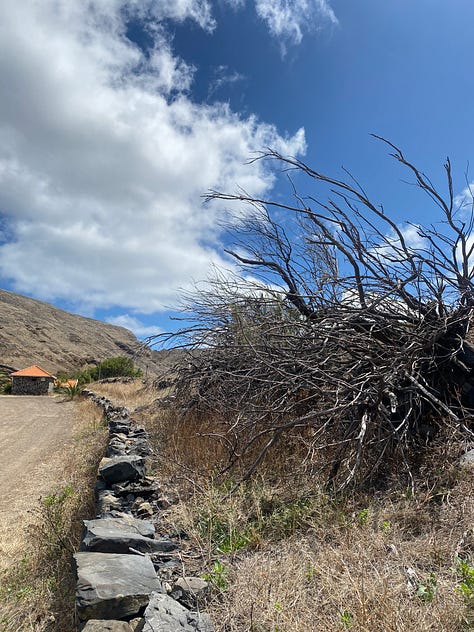
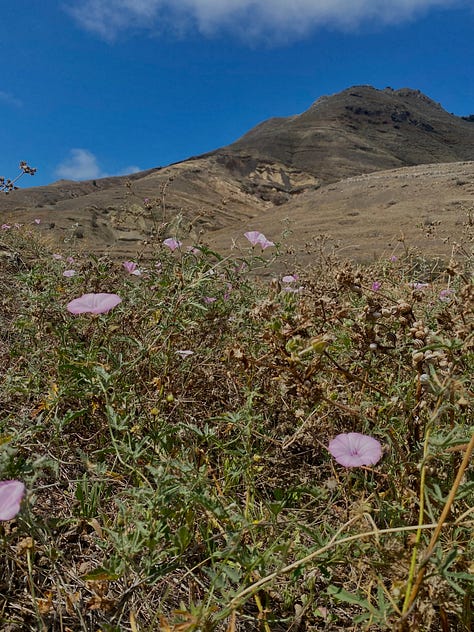
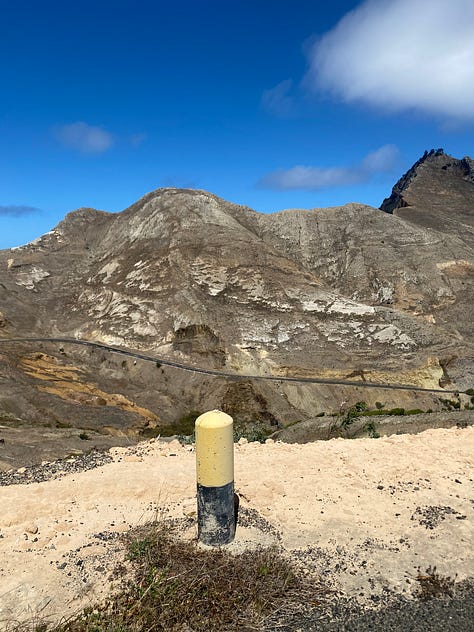

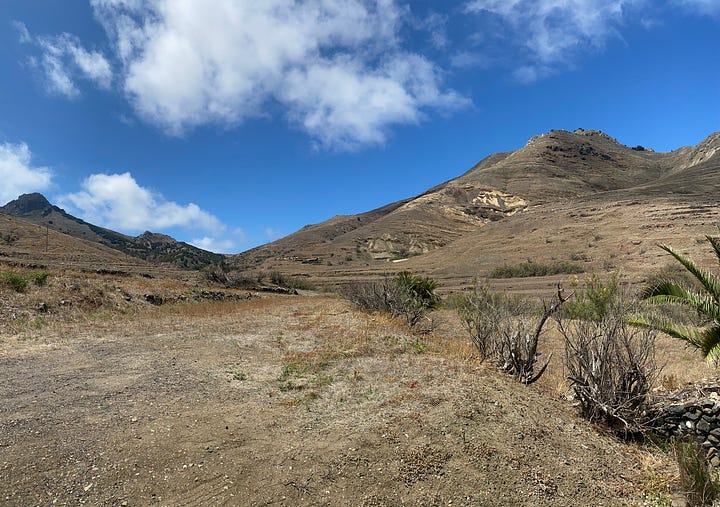
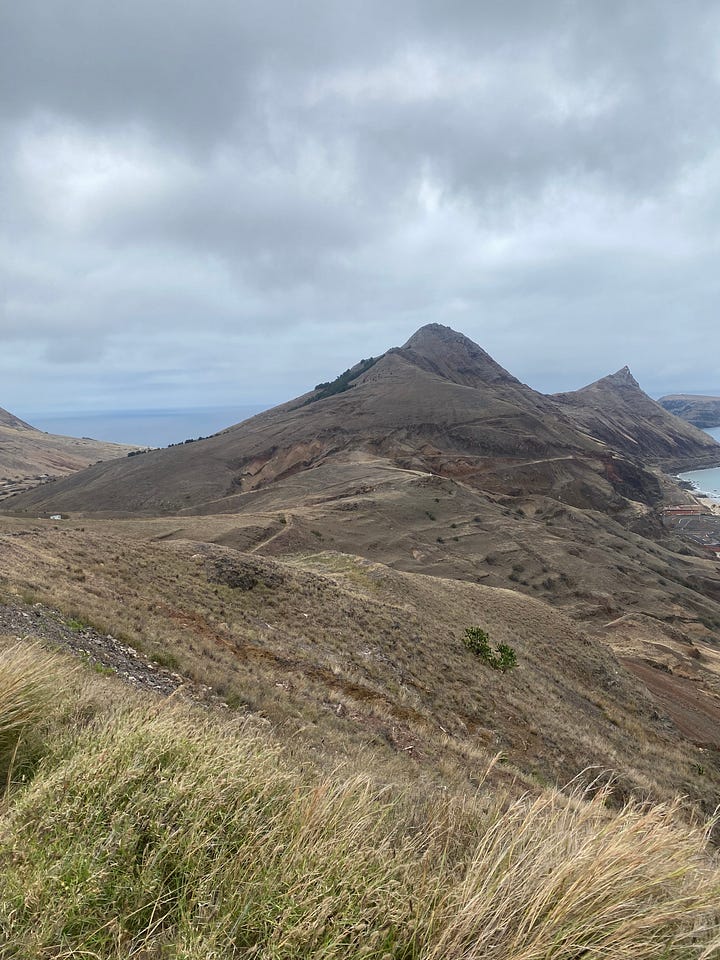
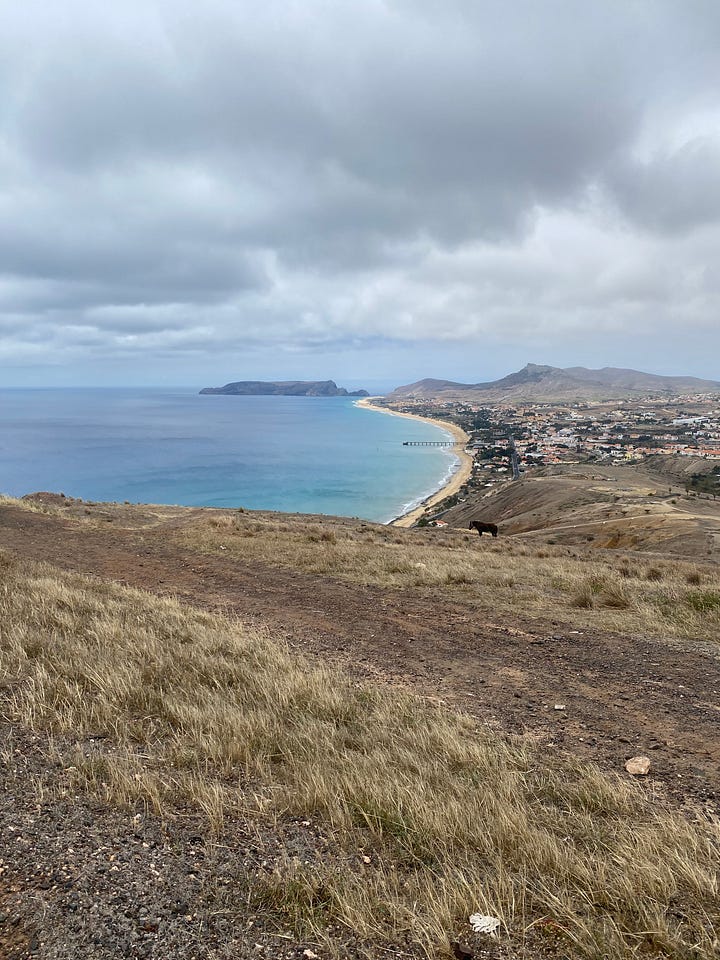
I can’t imagine life here ever being easy, but several factors contributed to the lack of continued success of the island’s agriculture. The harsh climate, successive and extended periods of draught, the difficult terrain, the lack of investment in watering systems and the difficult connections and communication with Madeira’s main island (it’s main market) gradually caused the desertification of this part of the island. Today, the north side is mostly home to stone quarries, a water treatment plant and other less attractive sites, though there are also some rocky beaches.
Porto Santo was discovered in 1418 (one year before the main island of Madeira), and soon after, those who came to try to make a new life here, were growing different types of cereal (wheat, barley, rye, corn) as well as lentils, which were then shipped to Portugal’s mainland. Later came the mining of lime, the extraction of which was difficult and hazardous, as well as the plantation of vineyards (a specific grape varietal, whose vines grow low on the ground, making them ideal for the local windy climate) and cultivation of watermelon.
Interestingly, until the first half of the 20th century, Porto Santo was Madeira’s main source of live stock, canned fish, bottled water, watermelon and grapes as well as wine (which was then used in the production of the more famous Madeira wine). Nowadays, there are no more exports leaving Porto Santo (except trash, unfortunately), and the island lives mainly off tourism, which dwindles down during the Winter months.
I should add that, although most of what is locally consumed is brought in either from Madeira or from the mainland, there are small scale producers who grow veggies to sell locally. You can find locally grown onions, tomatoes, papaya, pumpkins, grapes, as well as local eggs and honey, sold in small stalls around the main roundabout in Vila Baleira, the main town. And of course, there is the bolo do caco, which is also baked locally (though no longer with flour from grain grown and milled on the island). The water that comes out of the tap is also, you could say, local, as it is desalinated seawater, processed on the island. I assume this is also the water now used for watering, as it doesn’t rain enough in Winter to collect and use throughout the year.
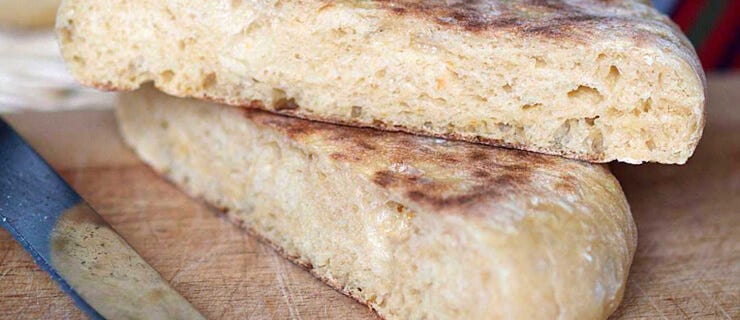
On another day, we visited Fonte da Areia, which is properly “on the other side”, as it faces due North. Literally, Sand Fountain, this was once one of the main sources of drinking water on the island (amazingly, there are sources of natural drinking water on the island). Today, its water is, according to the official translation, “uncontrolled” and its consumption not advised.
The site has changed a lot since I first visited back in the twentieth century. Clearly, having saved a lot in the translation of the signage, the local authorities had some extra cash which they wisely invested in proper access and surrounding areas.1 There are picnic tables and a beautifully landscaped viewpoint. The descent to the stony beach below is now relatively easily done, if you are willing to (carefully) go down, and then up, the 388 (sometimes slippery) steps.
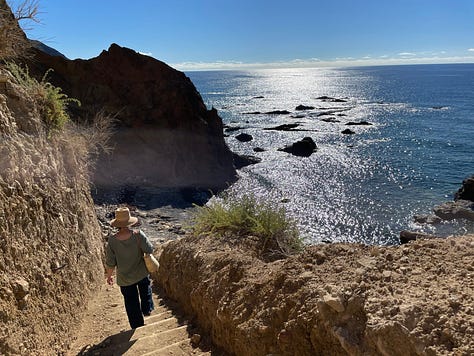
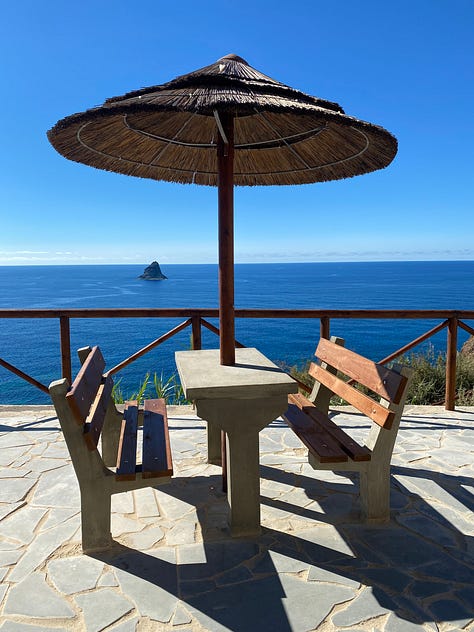

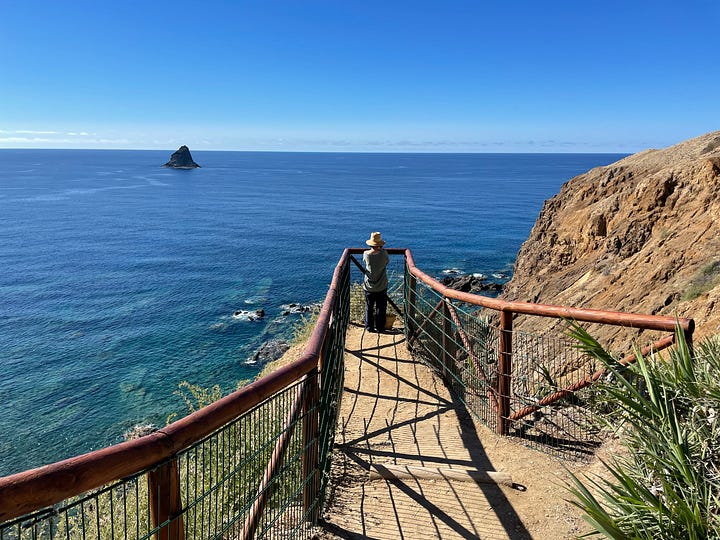

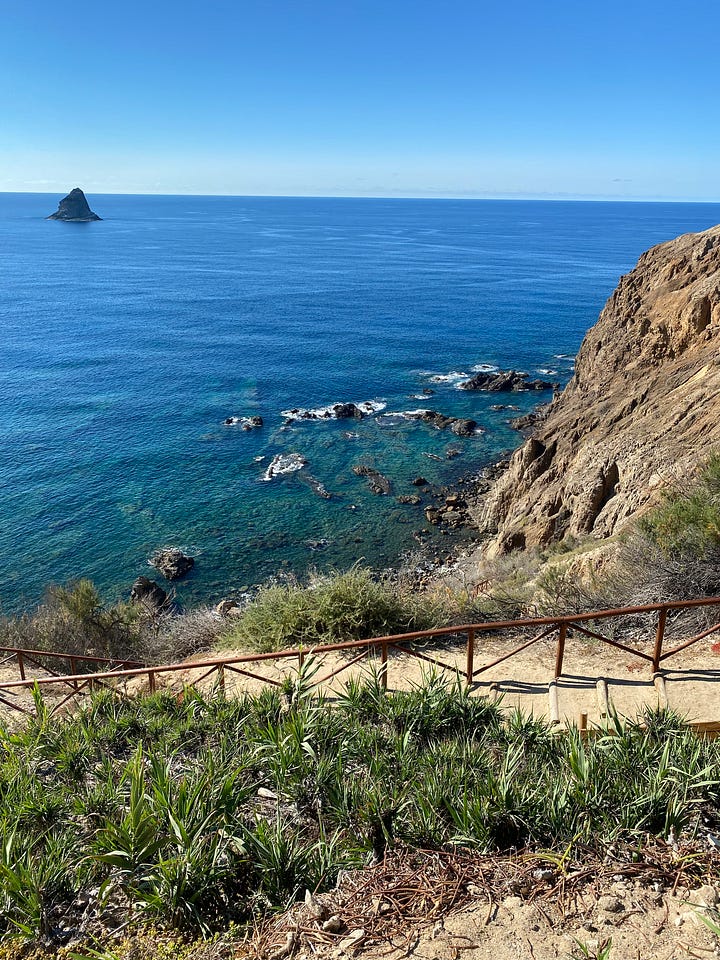

Aside from the main town, Vila Baleira, on the south side, there are smaller communities (I’m not sure they can be called villages…) around the island, including on the north side. Today it is easier to transport materials to the island and so there are houses being built in even the most unlikely and apparently unaccessible places. There are also some renovation projects of old existing houses using traditional building methods and materials, such as stone and clay.
Aha! See how I cleverly circled back to clay? Yes, I did.
So… Although I already knew there were clay deposits on the island and had even dug up some clayish soil from my uncle’s garden (you can see a picture on this post), on this visit, I learned that there are in fact several different types of clay to be found here, from iron rich red clay to white bentonite. While the site of the bentonite was kept so vague that I could not even attempt to find it (yet! I’ll be back!), I was directed to a couple of places where I could easily collect some red clay and some white clay. I was careful not to disturb any vertical walls and took only loose chunks I found laying around. Of course the better stuff can be found deeper, but I lack the expertise and the proper tools. Maybe one day I will know enough about these sites to venture on more exploratory digs. For now, I am planning to process and make slips with the small samples I collected. And I am giddy with excitement just thinking about it.
Below, you can see some pictures of the highly professional collection process... And I will of course be sharing the processing of the clay, and how I make and use the resulting slips.
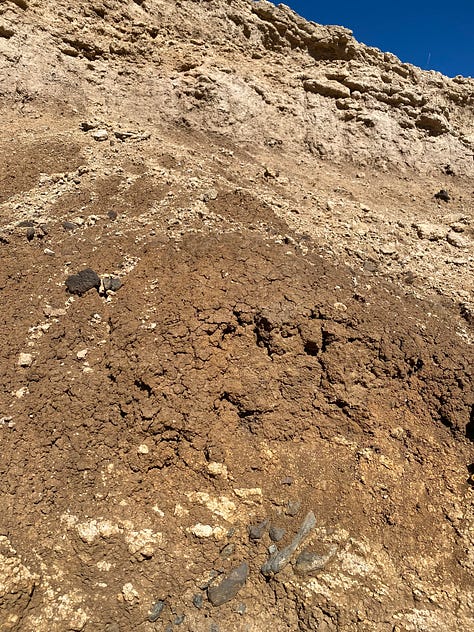
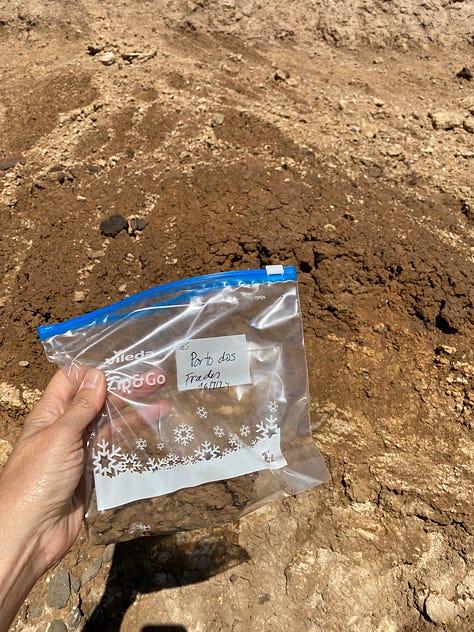
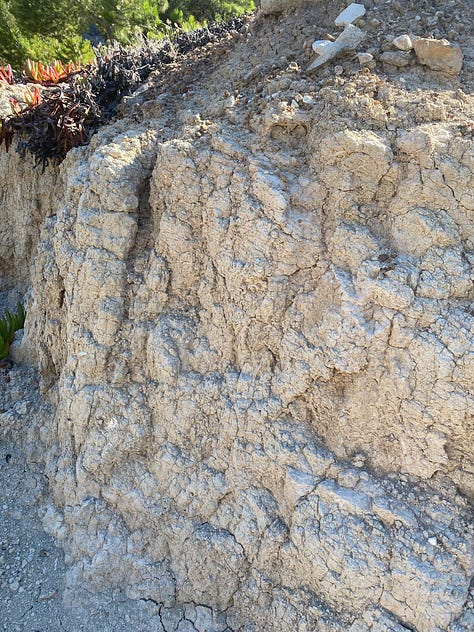
There is much left to say and to show but, for now, for this year, that’s it from me from Porto Santo.
If you have visited or ever visit the island (if you do, by the way, I would suggest avoiding the Summer months), make sure to let me know in the comments — I would love to hear about your experience.
As always, thank you so much for reading. Next postcard… Lisbon? Tomar? Somewhere else?
Until then, have a great day and enjoy the rest of the week, wherever you are in the world!
Sara xx
If you didn’t read the first postcard from Porto Santo and would like to, you can find it here:
Porto Santo, Madeira
Hi! How’s July treating you so far? This week’s newsletter is a trip down memory lane for me and a virtual postcard to you. I hope that reading my ramblings and looking at the sights will make up for the deviation from the usual format! For updated pictures of
If you would like to see my work
I’m on Instagram, and have an Etsy store where you can find some pieces created in my small home studio.
And if you think your friends would also enjoy reading Clay on my mind, consider sharing it with them.
I exaggerate, of course: all over the island there are now several informative panels placed strategically in different viewpoints and along hikes or areas of interest that are decently translated into English and sometimes also into French and German.

